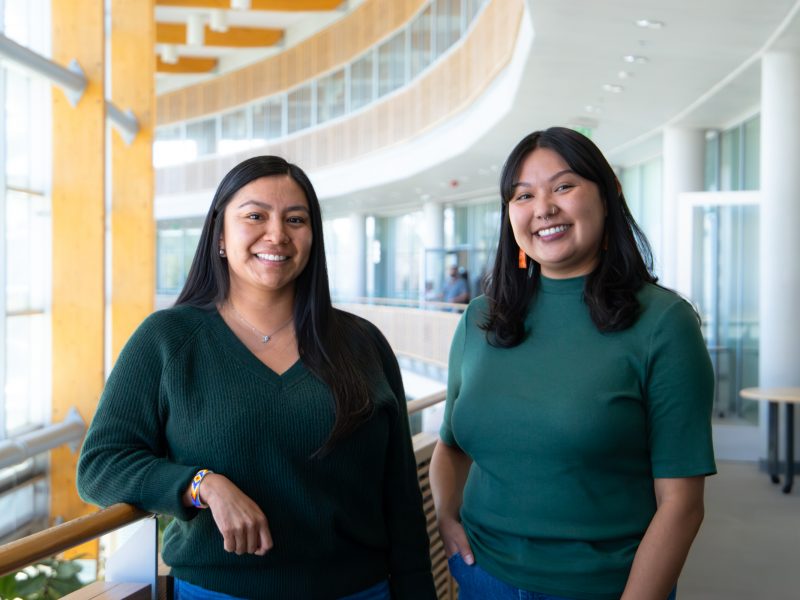The pathway from MPH to CHER
In the world of public health, the journey from student to staff researcher often involves navigating through diverse experiences, mentorships, and opportunities. For Marissa Tutt and Chassity Begay, two students who completed the Master of Public Health – Indigenous Health (MPH–IH) emphasis at Northern Arizona University (NAU), their paths led them to the Center for Health Equity Research (CHER), where they continue to advance health equity through their research. Their journeys highlight the roles of education, mentorship, and passion in shaping careers focused on addressing health disparities.
The MPH–IH Emphasis was created for students interested in overseeing public health initiatives within Native American populations. Graduates emerge equipped to strategize, execute, and evaluate public health programs, all while mindful of the cultural nuances of the Indigenous communities they serve.
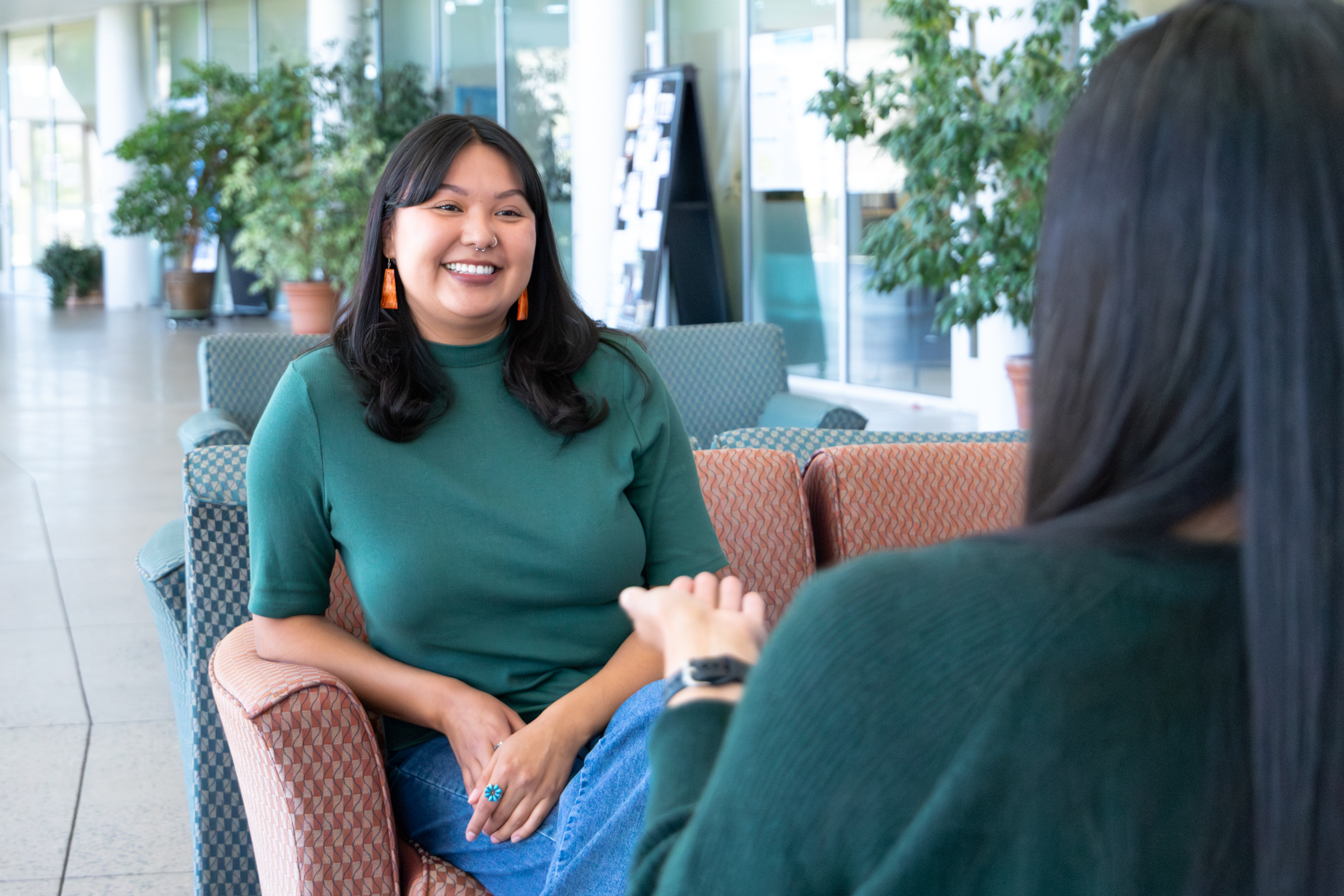
Chassity Begay is a member of the Navajo Nation and is originally from Whippoorwill, AZ but was raised in Farmington, NM. She received her MPH-IH from NAU in 2022. She currently works as a Research Coordinator for the Navajo Native American Research Center for Health (NARCH) and the Center for Native American Cancer Health Equity (C-NACHE) housed within CHER.
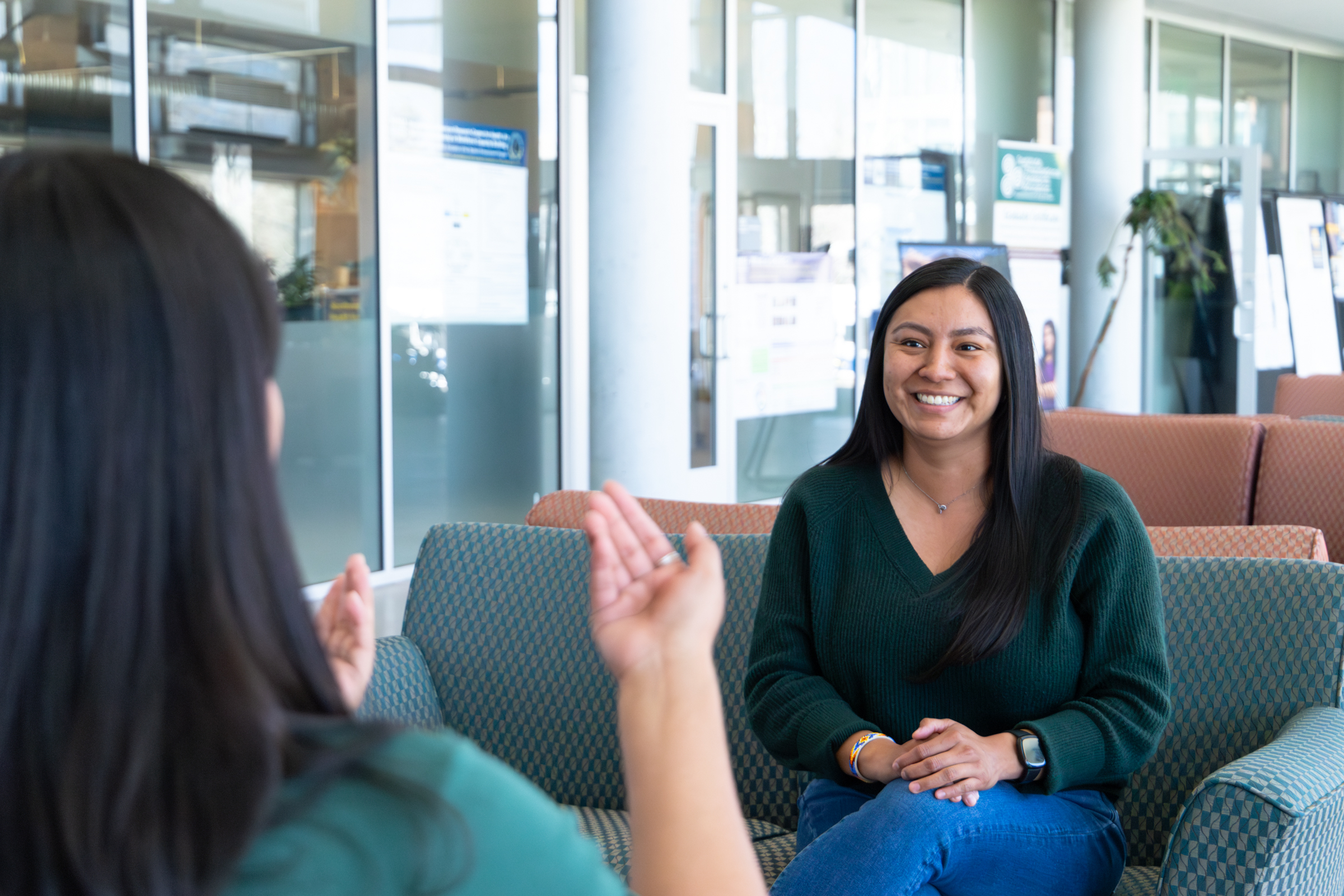
Marissa Tutt is an enrolled member of the San Carlos Apache Tribe. She was in the first cohort of the MPH-IH Program at NAU when it launched in 2018 and received her MPH-IH degree in 2019. Marissa is a Research Coordinator, Senior and works on multiple center grants but most of her work focuses on program evaluation.
Moments and mentors
Begay’s pathway to CHER began with a class taught by Priscilla R. Sanderson during her undergraduate studies in NAU’s Health Sciences Department. Witnessing a Navajo faculty member in academia sparked her interest in research and public health and she was later encouraged by Sanderson to apply to the MPH – IH program.
“At that point I was really new to research, and because of her, it was something that I was really excited to learn more about,” included Begay.
Another educator inspiring students to tackle health disparities is Nicolette Teufel-Shone. During her program, Tutt worked as a Graduate Research Assistant with Teufel-Shone, Associate Director for CHER and Principal Investigator for NARCH, and was inspired by her approach to minimizing inequities for Indigenous populations.
“Seeing her enthusiasm, especially with the Navajo NARCH team, and the want to grow and do more for Navajo like building their public health workforce – I think that not only prepared me for what was to come in working for CHER but was also a steppingstone to the professional realm.”
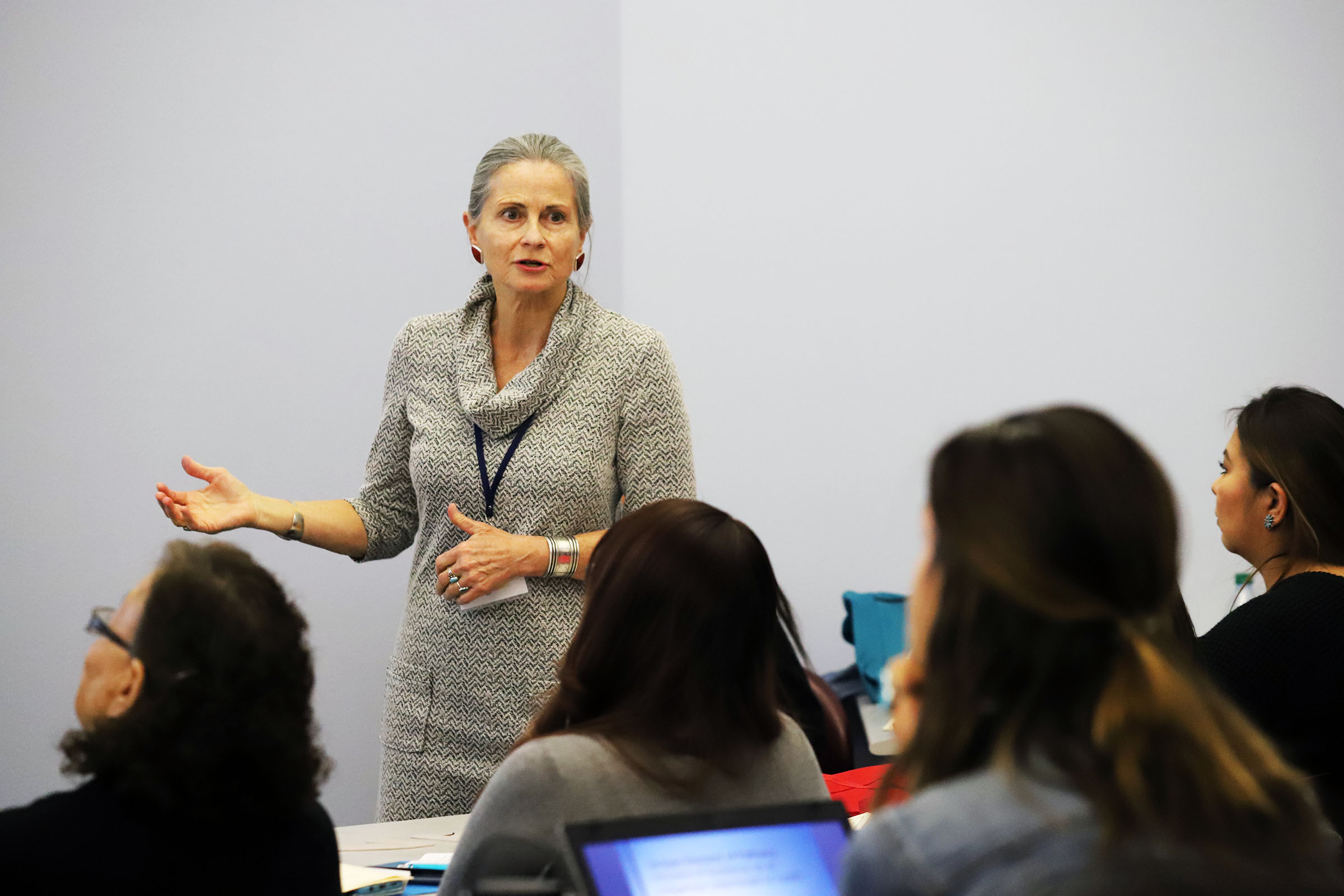
Professors like Sanderson and Teufel-Shone have the power to catalyze students in their career development through meaningful support. Their experiences highlight the need for diverse representation throughout the healthcare timeline from curriculum to career.
Teufel-Shone is no stranger to health disparities that Indigenous populations face and noted systemic factors that can limit the Indigenous healthcare workforce.
“Indigenous public health professionals often have experienced the impact of structural racism, specifically poorly funded health care systems that limit access to prevention and treatment services. These life experiences can not be taught in the classroom.”
Teufel-Shone, in recognition of systemic barriers for Indigenous researchers, seeks out students such as Begay and Tutt who show sincere passion for Indigenous health equity.
“Indigenous public health professionals are well positioned to develop innovative solutions to long standing injustices. Marissa’s and Chassity’s commitment to building the Indigenous public health workforce and improving health outcomes in Indigenous communities confirms that change is coming. The actions of Indigenous public health professionals are changing the trajectory of Indigenous health.”
The MPH-IH emphasis
Tutt was among the first to graduate from the MPH-IH program and noted that the curriculum has changed in the three years between her and Begay’s graduating classes. Although different and perhaps more refined, the program provided Tutt the building blocks for her career in public health and created opportunities for both Tutt and Begay to gain experience working with CHER before entering the professional world.
COVID-19
There was a prominent disruption that led to differing experiences for both Tutt and Begay during their MPH-IH programs: a global pandemic.
COVID-19 brought many courses fully remote, altering the structure of learning for many students who were suddenly learning hands-on topics through a screen. While Tutt was able to travel to on-site learning destinations on Navajo Nation, Begay was restricted to alternative methods.
Much of the world was impacted by COVID-19, with Navajo Nation reporting some of the highest rates of infection highlighting numerous health disparities for the population.
Graduate research projects
Through the power of adaptation, NAU was able to sculpt graduate programs and projects to include pandemic-related research and mobilize student workers.
The MPH – IH emphasis gives students the opportunity to dive into research projects led by professionals and educators, lending them real-world application before graduating. These projects are designed to lift students and give them the knowledge to enter the professional public health realm with confidence.
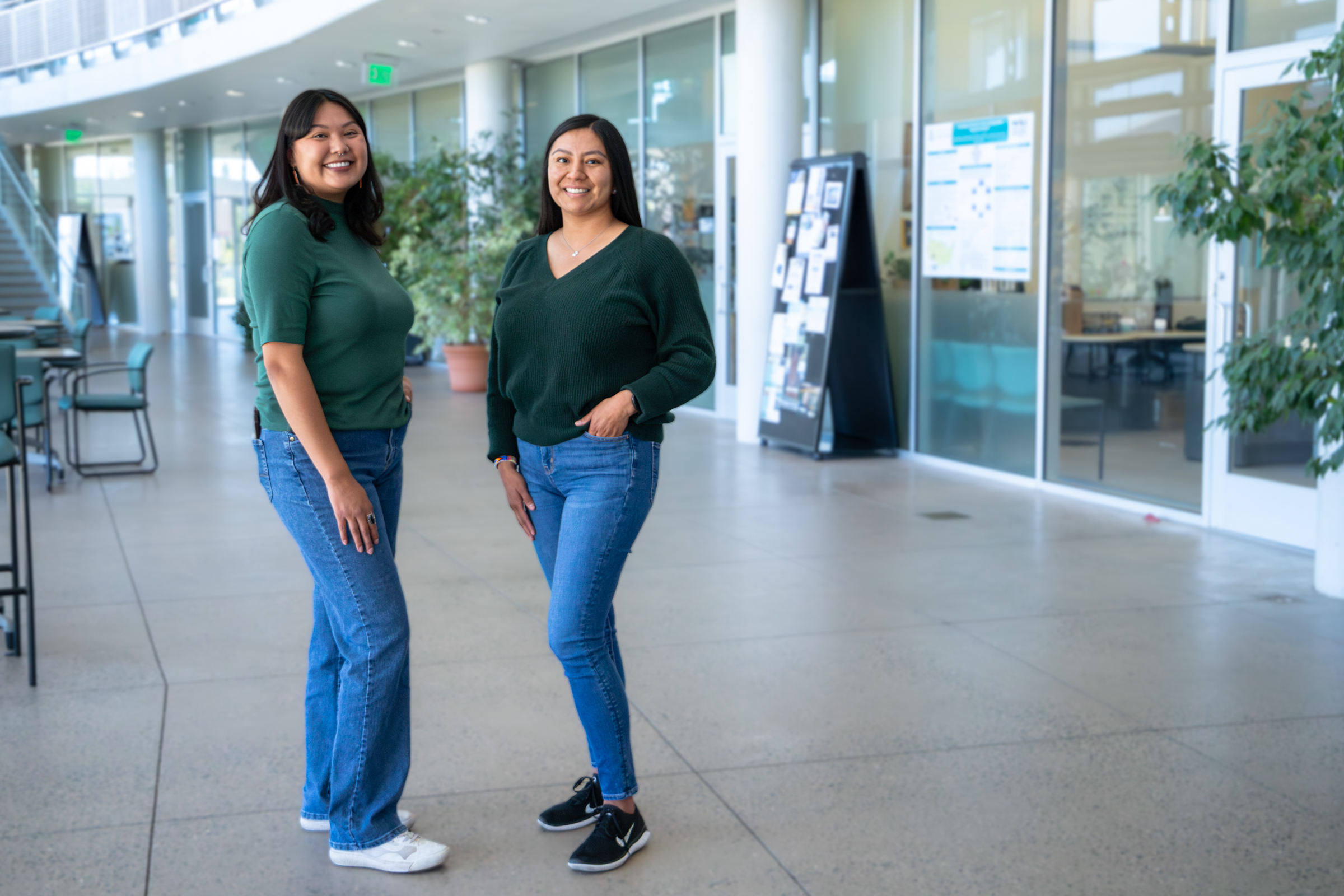
One project, Diné Teachings and Public Health Students Informing Peers and Relatives about Vaccine Education, or RAVE, attracted both Begay and Tutt. The program aimed to increase vaccination rates on Navajo Nation through documenting vaccine hesitancy stories and training public health students to provide culturally centered, scientifically valid vaccine education. Due to the nature of the project and timing of Begay’s studies, she chose RAVE for her graduate research project hoping to make a real impact on the health of Indigenous populations.
“It’s very cool and unique to be involved with [RAVE] from the beginning and be able to see it through. A big part of my professional career was that project.”
The project provided Begay with guided experience in many aspects of a research project:
- Conducting community surveys and survey analysis
- Assisting Diné College students in understanding the data
- Learning how to read and write a manuscript
- Presenting survey findings at the Navajo Nation Human Research Review Board
- Gathering enough meaningful data to publish three manuscripts
- Disseminating their findings and resources to the affected populations on Navajo Nation
Advice for aspiring health equity researchers
Begay and Tutt emphasized the importance of passion, community engagement, and understanding Indigenous history and health disparities when joining programs like the MPH–IH emphasis.
Tutt believes that passion is extremely important in being successful in the MPH–IH program which requires a strong connection to the work.
“Your heart must be in it. As Native Indigenous people, our common answer is that we want to return to our communities, or we want to help our people. Your heart is where the ‘want to help people’ comes from.”
Begay echoed that sentiment and added that community-based participatory research is essential for people who want to work with Indigenous communities.
“Understanding [Indigenous] history and that some communities may be hesitant to work with non-Indigenous people and researchers because of previous mistrust. It takes a lot of time and effort to really make [the relationship] work, to make sure their voices are heard, and ensure them that you’re there to help.”
Lessons learned
Begay and Tutt continue to work toward health equity through research, collaboration, and community-based participation. Without the knowledge, skills, and networking they gained through the MPH program, the pathway to their careers in health equity may not have been as direct. Indigenous leaders like Sanderson and Teufel-Shone stand as role models for Native American students who want to be the change that their people need.
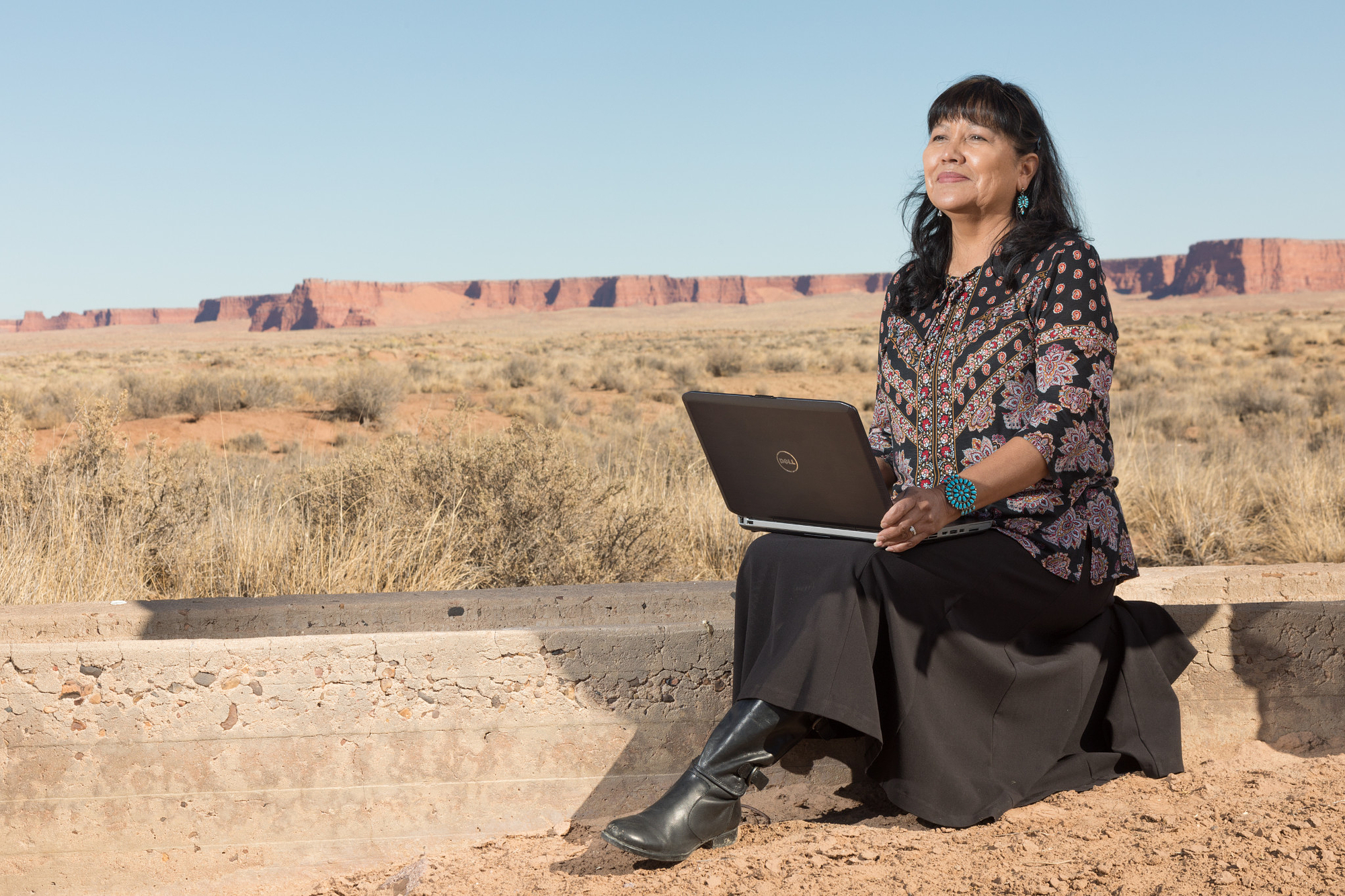
Sanderson enthusiastically added, “I am always stunned at the beauty and intelligence of our Native American students like Chassity and Marissa who were my former students. We come from various backgrounds being raised on our tribal lands and venture out to seek higher education; a different world but we embrace the challenges, surprises, and overcome bumps. I am happy that we have two of our own on the pathway as young research investigators to overcome health disparities among our Five-Fingered People—The People.”
CHER places a high priority on hiring and mentoring graduate students and employs many of them after graduation. Currently CHER has seven permanent research staff who are graduates of the MPH-IH program, and four other research staff who are graduates of NAU’s MPH program.
We encourage all undergraduate students seeking higher education to learn more about the MPH program and IH emphasis.
